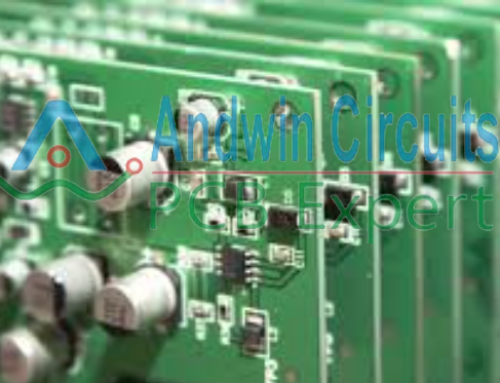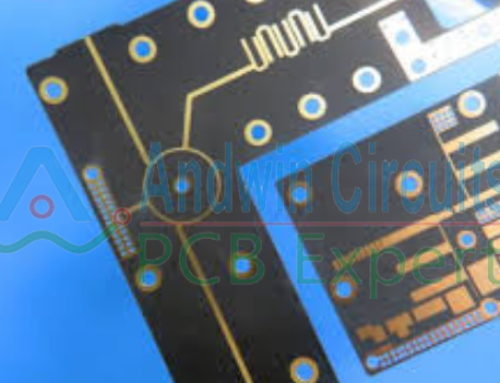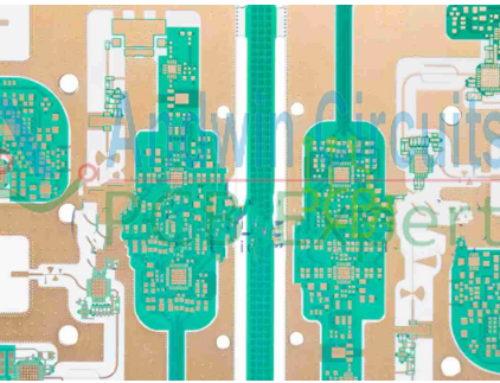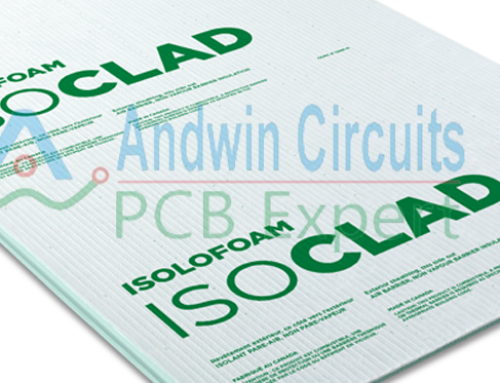When processing and testing high-frequency PCB boards and high-frequency antennas, beginners
often choose the incorrect high-frequency PCB, resulting in unsatisfactory product results.
today
Let’s talk briefly, what are the high-frequency PCB boards? how to choose?
Definition of PCB high frequency board
High-frequency circuit boards refer to special circuit boards with higher electromagnetic
frequencies, used for high frequencies (frequency greater than 300MHZ or wavelength less than 1
meter) and microwaves (frequency
PCB in the field of greater than 3GHZ or wavelength less than 0.1 meters) is a part of the
process of using ordinary rigid circuit board manufacturing methods on microwave base material
copper-clad boards or
Circuit boards produced by special processing methods. Generally speaking, high-frequency boards
can be defined as circuit boards with frequencies above 1GHz.
With the rapid development of science and technology, more and more equipment are designed in
the microwave frequency band (>1GHZ) or even above the millimeter wave field (77GHZ)
Applications (such as the now popular 77GHz automotive millimeter-wave antenna), which also
means that the frequency is getting higher and higher, and the requirements for the substrate of
the circuit board are also getting higher and higher.
high. For example, the substrate material needs to have excellent electrical properties, good
chemical stability, and loss requirements on the substrate as the frequency of the power signal
increases.
Very small, so the importance of high-frequency plates is highlighted.
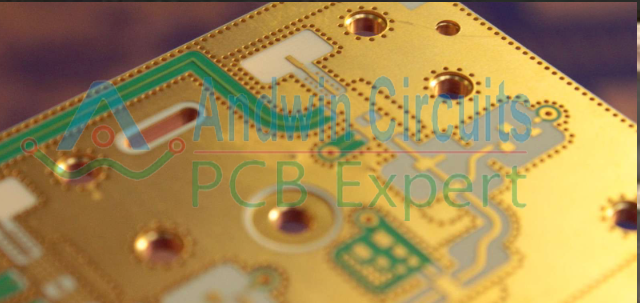
Classification of PCB high frequency circuit boards
A. Divided by material:
a. Organic materials: phenolic resin, glass fiber/epoxy resin, Polyimide, BT/Epoxy, etc. all
belong to this category.
b. Inorganic materials: aluminum, Copper-invar-copper, ceramic, etc.
all belong to this category. Mainly choose its heat dissipation function
B. Distinguish the finished product by softness and hardness
a. Rigid PCB,
b. Flexible board Flexible PCB,
c. Flexible and hard board Rigid-Flex PCB
Taiyao TUC: Tuc862, 872SLK, 883, 933, etc.
C. Divided by structure
a.Single panel, b.Double panel, c.Multilayer board
D. According to purpose
Communications/consumable electronics/military/computers/semiconductors/electrical test boards…
Commonly used high-speed plates (manufacturers)
National Brand
National boards are cost-effective and their performance is not inferior to imported products.
The representative ones are: Dongguan Shengyi, Shanghai Nanya New Materials, Taizhou Wangling,
Taixing Microwave, Changzhou
ZhongYing, Gongli Ceramic Plate, Taiyao TUC: Tuc862, 872SLK, 883, 933, etc.
International Brand
1) Rogers: Rogers: RO4003, RO3003, RO4350, RO5880, etc.
With the development of 5G millimeter
wave, Rogers has also launched a variety of suitable
Millimeter wave low loss circuit board.
RO3000 series: Based on ceramic-filled PTFE circuit materials, models include: RO3003, RO3006,
RO3010, RO3035 high-frequency laminates.
RT6000 series: Based on ceramic-filled PTFE circuit materials, designed for electronic circuits
and microwave circuits that require high dielectric constants. Models include:
The dielectric constant of RT6006 is 6.15, and the dielectric constant of RT6010 is 10.2.
TMM series: composite materials based on ceramics, hydrocarbons, and thermosetting polymers,
models: TMM3, TMM4, TMM6, TMM10, TMM10i,
TMM13i. etc.
2) Taconic: TLX series, TLY series, etc.
3), Panasonic: Megtron4, Megtron6, etc.
4), Isola: FR408HR, IS620, IS680, etc.
5), Nelco: N4000-13, N4000-13EPSI, etc.
Of course, there are many other high-frequency circuit board materials that are not listed one
by one. Among them, Arlon (acquired by Rogers and also an old brand RF microwave board
manufacturer).
What are the important indicators for selecting high-frequency and high-speed PCB materials?
When selecting substrates for PCBs used in high-frequency circuits, special attention should be
paid to the changing characteristics of the material DK at different frequencies. And for the
emphasis on signal high
For high-speed transmission requirements or characteristic impedance control requirements, the
focus is on DF and its performance under frequency, temperature, humidity and other conditions.
General substrate materials show large changes in DK and DF values under the condition of
changing frequency. Especially in the frequency range from l MHz to l GHz, it
The changes in our DK and DF values are more obvious. For example, the general epoxy resin-glass
fiber cloth-based substrate material (general type FR-4) at a frequency of 1MHz
The DK value is 4.7, while the DK value change at the frequency of 1GHz is 4.19. Above 1GHz, the
change trend of its DK value is gentle. Its changing trend
The potential becomes smaller as the frequency increases (but the change is not large). For
example, at 10GHz, the general DK value of FR-4 is 4.15, which has high speed,
For substrate materials with high frequency characteristics, the DK value changes little when
the frequency changes. When the frequency changes from 1MHz to 1GHz, the DK value is mostly
maintained in the range of 0.02.
The change. Its DK value has a slight downward trend under different frequency conditions from
low to high.
The dielectric loss factor (DF) of a general substrate material is affected by frequency changes
(especially changes in the high frequency range) and produces a DF value.
The changes are bigger than DK. Its changing pattern tends to increase. Therefore, when
evaluating the high-frequency characteristics of a substrate material, the focus of
investigation is its
Changes in DF value. Substrate materials with high-speed and high-frequency characteristics have
two obvious differences in their changing characteristics at high frequencies.
There are two identical categories: one is that its (DF) value changes very little as the
frequency changes. There is also a category that is different from general substrate materials
in terms of change range.
Similar, but its (DF) value is lower.
How to choose high-speed circuit board materials
Choosing PCB boards must strike a balance between meeting design requirements, mass production,
and cost. Simply put, design requirements include electrical and structural
Reliability of these two parts. Usually this board material issue will be more important when
designing very high-speed PCB boards (frequency greater than GHz). For example, now commonly
used
The FR-4 material has a large dielectric loss Df (Dielectric loss) at frequencies of several
GHz, so it may not be suitable.
For example, the 10Gb/S high-speed digital signal is a square wave, which can be regarded as a
superposition of sine wave signals of different frequencies. Therefore 10Gb/S contains many
different
Same frequency signals: 5Ghz fundamental wave signal, 3rd order 15GHz, 5th order 25GHz, 7th
order 35GHz signal, etc. Maintain the integrity of digital signals and the accuracy of upper and
lower edges
The steepness is the same as the low-loss and low-distortion transmission of radio frequency
microwaves (the high-frequency harmonic part of the digital signal reaches the microwave band).
Therefore, in many ways
In terms of PCB material selection for high-speed digital circuits, the requirements for PCB
material selection are similar to those for radio frequency and microwave circuits.
In actual engineering operations, the selection of high-frequency boards seems simple, but there
are still many factors that need to be considered. Through the introduction of this article, as
a PCB
Design engineers or high-speed project leaders have a certain understanding of plate
characteristics and selection. Understand the electrical properties, thermal properties,
reliability, etc. of the board.
And rational use of lamination is used to design a product with high reliability and good
processability, and various factors are considered to be optimized.
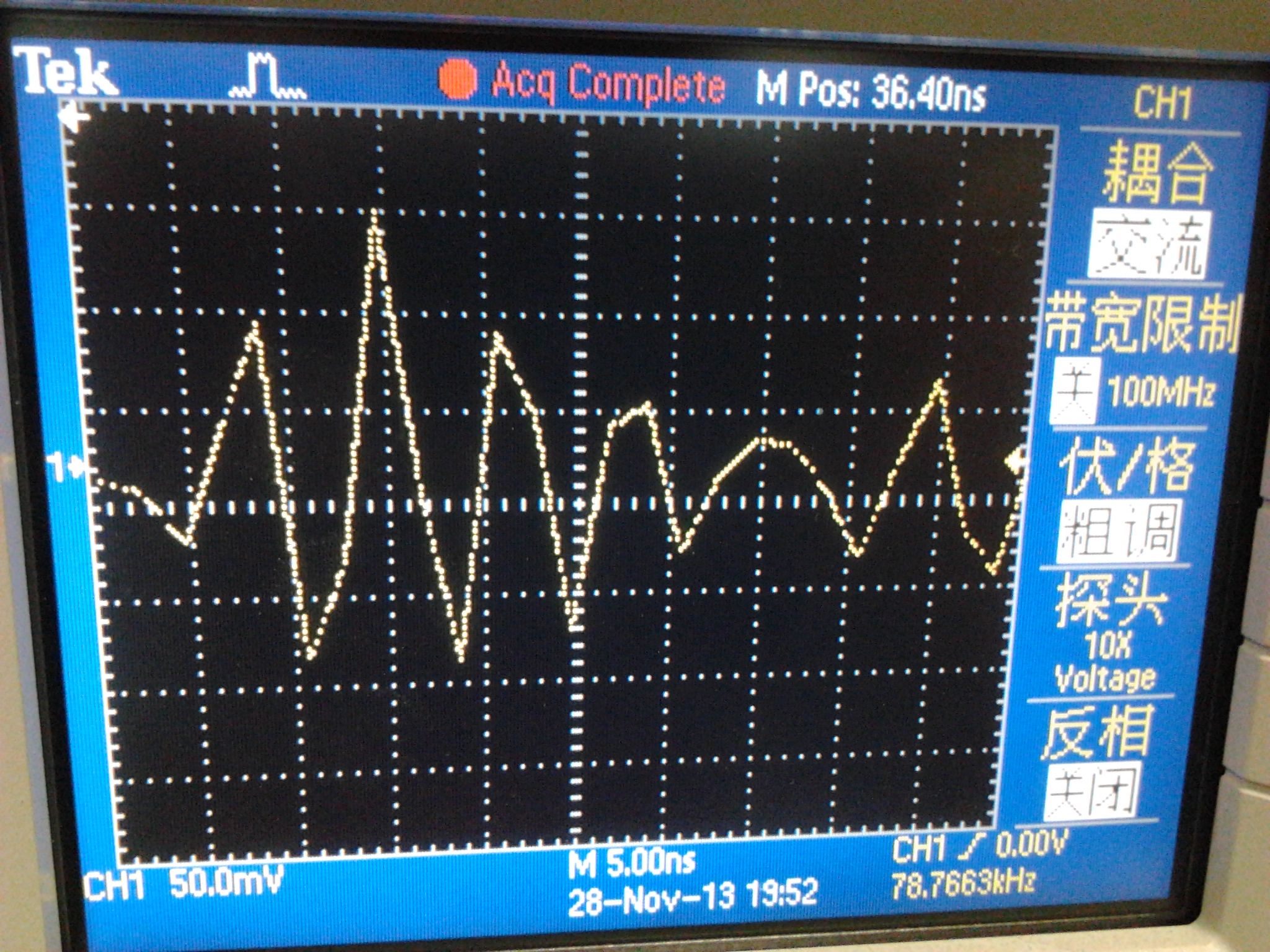
The following will introduce the main factors to consider when choosing the right plate:
1. Manufacturability:
For example, the performance of multiple laminations, temperature performance, etc., CAF/heat
resistance, mechanical toughness (stickiness) (good reliability), and fire protection level;
2. Various properties matching the product (electrical, performance stability, etc.):
Low loss, stable Dk/Df parameters, low dispersion, small coefficient of variation with frequency
and environment, small tolerances on material thickness and glue content (good impedance
control),
If traces are long, consider low-roughness copper foil. Another point is that simulation is
required in the early stage of high-speed circuit design, and the simulation results are the
reference standard for the design.
High Speed/RF has solved the performance
problem of inconsistent simulation results and testing, and has done a large number of
simulations
Closed-loop verification with actual testing, through a unique method, can achieve consistency
between simulation and actual measurement.
3. Timely availability of materials:
The procurement cycle for many high-frequency boards is very long, even 2-3 months;
except for the conventional high-frequency boards RO4350, which is in stock, many high-frequency boards
need to be provided by customers. because
Therefore, high-frequency plates need to be communicated with the manufacturer in advance and
materials prepared as early as possible;
4. Cost factors Cost:
Depend on the price sensitivity of the product, whether it is a consumer product or a
communication, medical, industrial, or military application;
5. Applicability of laws and regulations, etc.:
It must be integrated with the environmental protection regulations of different countries and
meet RoHS and halogen-free requirements.
Among the above factors, the running speed of high-speed digital circuits is the main factor to
consider when selecting PCB.
The higher the speed of the circuit, the higher the selected PCBDf
value should be.
Small. Circuit boards with medium and low losses will be suitable for 10Gb/S digital circuits;
boards with lower losses will be suitable for 25Gb/s digital circuits;
Low-loss boards will adapt to faster high-speed digital circuits, which can be 50Gb/s or higher.
From the material Df:
Df ranges from 0.01 to 0.005. Circuit board materials are suitable for 10Gb/S digital circuits;
Df ranges from 0.005 to 0.003. The suitable upper limit for circuit board materials is 25Gb/S
digital circuits;
Circuit boards with Df not exceeding 0.0015 are suitable for 50Gb/S or higher high-speed digital
circuits.
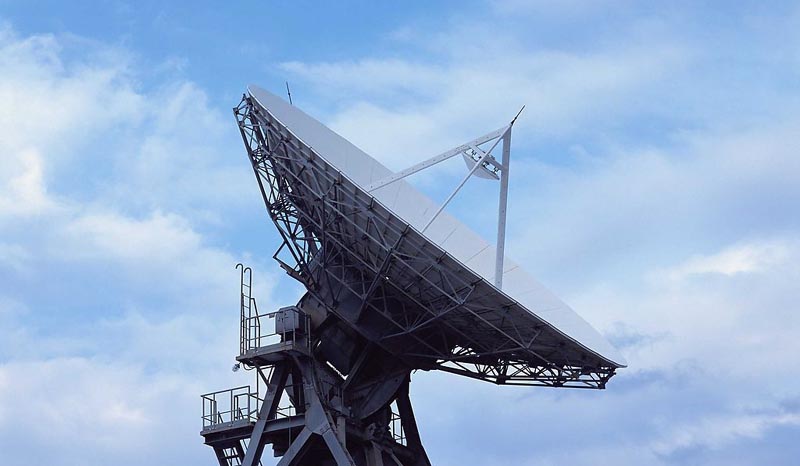
High frequency PCB manufacturing processing:
1. Cutting materials: The protective film must be retained when cutting materials to prevent
scratches and indentations.
2. Drilling:
2.1 Use a new drill tip (standard 130), one piece at a time is best, and the presser foot
pressure is 40psi
2.2 Use the aluminum sheet as the cover plate, then use 1mm melamine backing plate to tighten
the PTFE plate
2.3 After drilling, use an air gun to blow out the dust in the hole.
2.4 Use the most stable drilling rig and drilling parameters (basically, the smaller the hole,
the faster the drilling speed, the smaller the chip load, the smaller the return speed)
3. Hole treatment
Plasma treatment or sodium naphthalene activation treatment is beneficial to via metallization
4.PTH copper immersion
4.1 After micro-etching (the micro-etching rate has been controlled to 20 micro inches), start
feeding the plate from the oil removal cylinder in the PTH
4.2 If necessary, pass the second PTH, just start from the estimated? The cylinder starts to
feed
5. Solder mask
5.1 Pretreatment: Use acidic plate washing, do not use mechanical grinding.
5.2 Bake the plate after pre-treatment (90℃, 30min), brush with green oil and solidify
5.3 Bake the plate in three stages: one at 80°C, 100°C, and 150°C, for 30 minutes each (if
oil is found on the surface of the base material, you can rework: wash off the green oil,
reactivation treatment)
6. Gong board
Lay the white paper on the circuit surface of the PTFE board, and clamp it up and down with a
1.0MM thick FR-4 base material plate or phenolic base plate that has been etched to remove
copper.
The above summarizes how to select high-speed plates and design considerations. Actual
applications must be analyzed based on specific cases.

